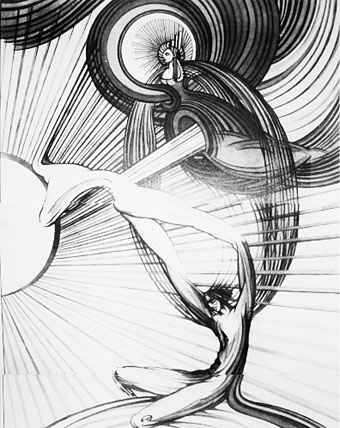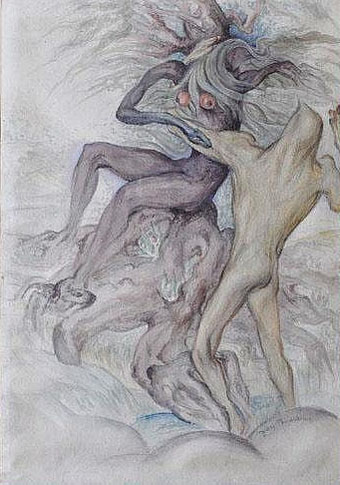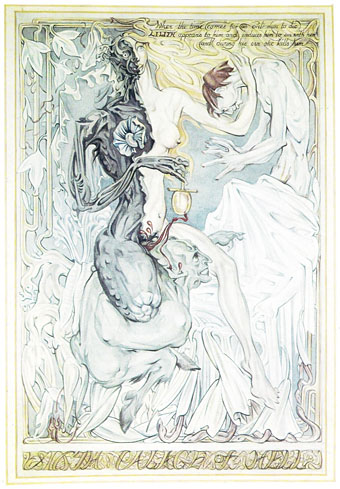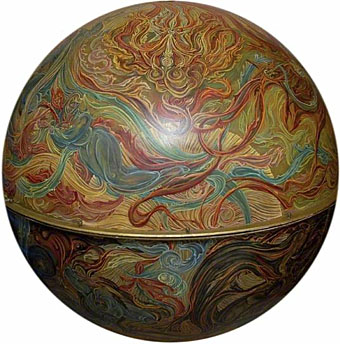The Sixth Palace of Hell (1945).
Fay Pomerance’s painting of Lilith makes a startling appearance in a book I have about the history of magic symbols, and it’s that appearance which prompts this post since I’ve never seen her work given any attention elsewhere. This seems surprising when women artists, and artists whose concerns encompass mysticism or the occult, are receiving greater attention than ever before.

The Union of Isis and Osiris (1959).
Pomerance was British, and had the misfortune to be working during a lengthy period when expressions of the imagination or unorthodox spirituality in visual art were regarded as suspect or even disreputable. Her work also stands apart from any of the prevailing movements which provide such convenient labels for those art critics and writers who dislike anything that won’t fit into one of their boxes. The Lilith picture shows an obvious debt to another British artist who stands apart from the crowd: William Blake. The BBC’s Your Paintings site has a few of Pomerance’s larger works from the collection at Durham University, including the Sphere of Redemption below which is painted on a fibreglass globe, but for the moment there isn’t a dedicated site representing her art.

The Temptation (date unknown).
The Sphere of Redemption (date unknown).



This post is timely. I recently came across The Union of Isis and Osiris (also in a book about magic and symbology, David Ovason’s The Zelator) and made a mental note to see if any of her work was online – thanks for reminding me! Which book did you find the Lilith paining in?
It’s Magic Symbols (1989) by Frederick Goodman. Not a great book for such a broad subject but it does have a variety of pictorial material. As well as the Lilith picture there’s another Pomerance painting, In the Name of the Lord, which can be seen here under a different title:
http://www.henrydyson.co.uk/artists/fey-pomerance/night-prayer
Neat post, John. I’ve always been intrigued by that image of Lilith since i first saw it in some book way back when. It seems like her work is always accompanied by little comment as there wasn’t much to go with it in this case. Strikingly modern imagery, hard to believe it’s 1945.